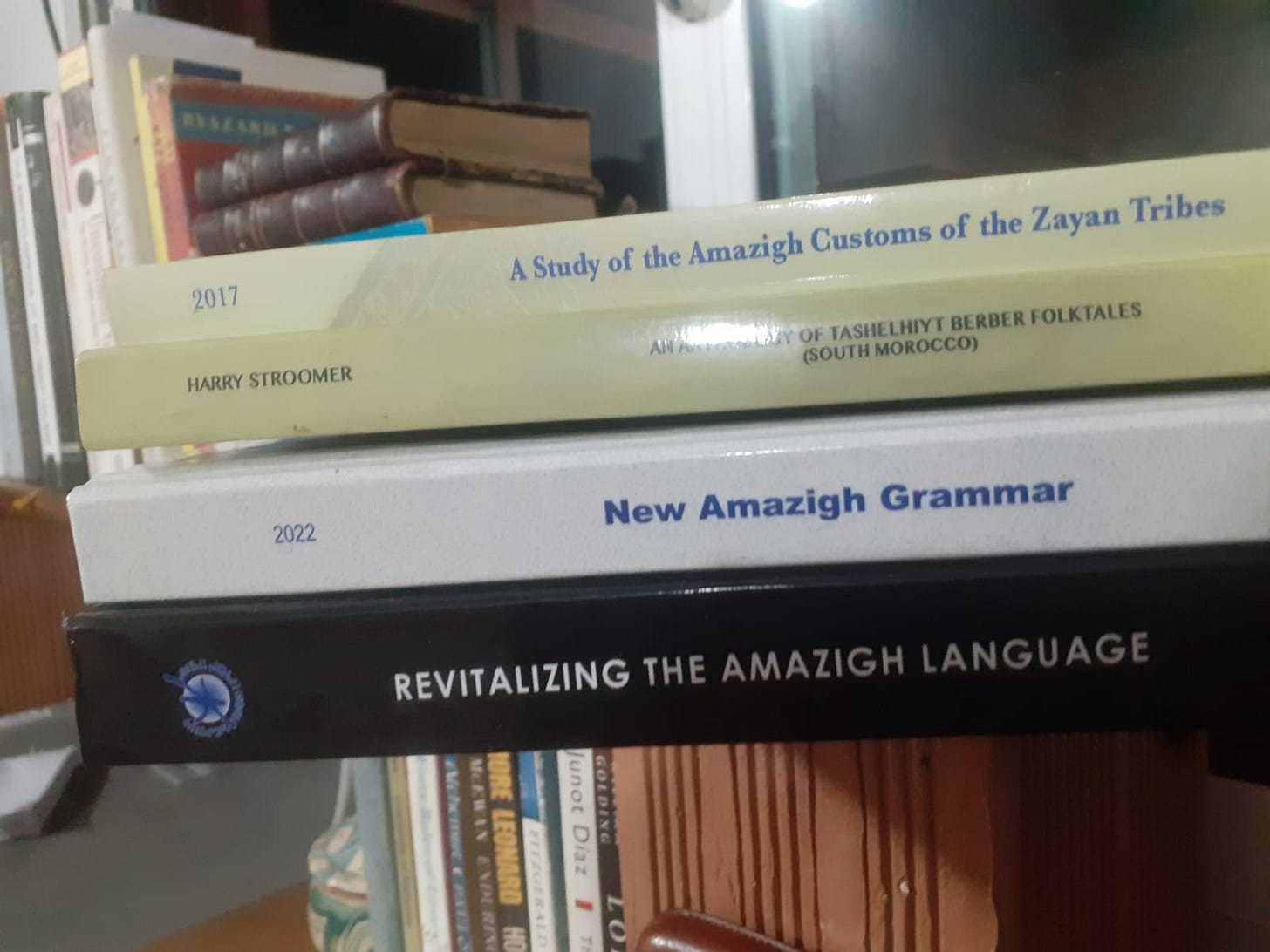Happy New Year to Morocco's largest ethnic group
The Amazigh people celebrate nearly 3,000 years of dwelling in the Maghrib
Sunday was New Year’s Day for the Amazigh people. And for the first time, it is a national paid holiday celebrated by all the people of Morocco.

You have heard of the term Berber as the Amazigh are more commonly known. I will use both terms. This distinct ethnic group inhabits North Africa from Morocco to Algeria and even into Libya. Nearly 20 million live in Morocco which means over half of the population are Berbers.
They have a common language and a unique alphabet. I can’t read it, but it is used on road signs along the autoroute. But their dialects are so different that sometimes the people of the Atlas Mountains have difficulty understanding their kinfolks in the South.
The Arabs call them “shlouh” which to me sounds like a slur. But the Amazigh are proud of being shlouh. However, there is often conflict between those who identify as Arabs and the Amazigh.
I remember witnessing a conflict in a small town called Tinzouline close to the Sahara desert. I was invited to a meeting to listen to both sides and help resolve a serious conflict which had come to physical violence. I saw that the Arabs were mistreating the shlouh and could not understand the reason.
An Arab explained that the Berber are sometimes a little too proud and arrogant because they are the indigenous people of this region. They own the land. All Berber shepherds have the right to graze their sheep and goats throughout the land of Morocco. They travel far and wide through the forests, plains and Atlas mountain ranges without hindrance. Maybe the Arabs have a false sense of superiority or maybe they are simply jealous.
The Arabs got here in the 7th century when a descendant of the Prophet Muhammad (SAWS) , named Idris ibn Abdullah escaped from a war in the Arab peninsula to arrive in the Maghrib, the farthest point to the West. In the Islamic calendar, which Arabs, the Amazigh and all muslims follow, it is the year 1445.
But this weekend, the Amazigh celebrated the year 2973. Their calendar begins in 950 BC when their tribesman King Shoshenq I was the first pharoah to rule over ancient Egypt. Fascinating. I want to know more.
Yennayer is the Amazigh word for ‘New Year’ and is celebrated in January as this is the season of farming. It is winter but all around me the fields are lush and green with winter wheat. The rainy season just passed. Temperatures drop at night but there is no frost and the wheat swells during the day under the hot sunlight.
Most of the dark-skinned people of Morocco identify as Arab. Most of their ancestors may have come from deeper into Africa, but they have the same dances, culture and mindset of the lighter-skinned Arabs throughout the country.
But there are black Amazigh as well. Any person, no matter their skin color, who speaks the Amazigh language, is among the tribe. Period. They make no distinction. One of my neighbors in Rabat was a black man named Hajji Moukhtar who could be mistaken for a Senegalese. But he is a Berber who speaks Amazigh with his wife. In many Berber households, including Hajji Moukhtar’s, the children do not speak Amazigh. Instead they speak the Arabic dialect called Darija which is the lingua franca of Morocco.
I think in this way, the Amazigh language may be lost in generations to come. But they have increased in social and political power and are actively lobbying to keep their language and culture alive. There are television shows with sitcoms and musical performances all in the Amazigh language. And there are a growing number of separatists. I see their colorful flag more often than when I arrived here seven years ago.
In a souq, I bought some books in English published by the Royal Institute of Amazigh Culture. I know a few words in Amazigh but I don’t have any intention of trying to learn the language. But two of the books have Berber folktales which I plan to read, rewrite and publish.
I find the Amazigh to be more religious and steadfast to Islam than the Arabs. The Berber people are very pious and follow Islamic traditions faithfully. Arabs readily admit this to be true.
On Sunday a family got together to celebrate Yennayer. I thought they were Arabs, but the husband was Amazigh. They prepared a large dish of Rfissa, one of my favorite traditional Amazigh meals. But it takes time and energy to prepare.
Rfissa is only prepared with chicken. The base of the meal is flat bread called Mssemen or Treid which is shredded and put on the bottom. It also includes lentils, onions, roasted garlic and the gravy which soaks into the shredded bread. Some Moroccan households prepare it with fenugreek which I prefer. Fenugreek has distinct smell but is very healthy and is known to lower your blood pressure.
I am very pleased to share with you the culture of Morocco.





